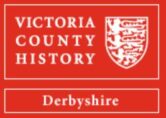The old Hasland parish covers a wide area of Chesterfield, including the once heavily industrialised Derby Road. One of the biggest industrial concerts in the township was the works Chesterfield Cylinders. ‘The tube works’ as they were known is the subject of this blog.
We’ve condensed text from our forthcoming VCH spin-off book on Hasland, to present this shortened history of the companies which once occupied the prominent sites on either side of Derby Road.

The works are established
The development of land on either side of Derby Road to the south of the town by the engineering industry began in 1897 when Augustus William Byron, a prominent Chesterfield land agent and businessman, promoted the Universal Steel Tubes Company (Ehrhardt’s Process) Ltd to make weldless steel tubes for naval vessels, exploiting the UK rights to a German process.
Chesterfield was chosen for the new venture because of its central position in a traditional iron and steel making district and the availability of fairly cheap labour. An 11-acre site on the west side of Derby Road about half a mile south of the town was acquired, on which buildings covering 3½ acres were erected, known as the Universal Works. There was with rail access via the Brampton branch of the Midland Railway.
In 1899 Byron’s firm announced the sale of freehold building land adjoining the works, noting that arrangements could probably be made with the purchaser to lease 50 houses erected on the land to the Universal company, presumably for workmen and their families.
The original company failed in April 1901. In November that year the business was reconstructed as the Universal Tube Co. Ltd. There was a further reorganisation in 1906, when a syndicate of London financiers, purchased a tube-making patent from a Balfour Frazer McTear, an engineer employed for a time as a manager by the Universal company. The syndicate established the Chesterfield Tube Co. Ltd. The new company took over the existing business as a going concern
Chesterfield Tube remained independent until 1929, when it was absorbed into Tube Investments Ltd, a combine established in 1919 to reorganise the industry.
Products and expansion
The Chesterfield plant was initially equipped with ‘Ehrhardt’ machinery, delivered in September 1898, and also used the Pilger process. The company faced a number of technical problems in its early years, some of which were overcome by extruding the tubes. In this period it produced boiler and economiser tubes for the Admiralty and small tubes for locomotives and other applications. Shell forgings were made during the Boer War. After the reconstruction of 1906 the company, with about a hundred employees, initially concentrated on boiler tubes and other small diameter products but from 1907 expanded to make weldless steel tubes. It also made weldless steel cylinders for oxygen and carbon dioxide.
During the First World War the Chesterfield plant employed about 1,500 men. New forging presses and hot- and cold-draw benches were installed. The company’s contribution to the war effort included aircraft tubing, light oxygen cylinders for aircraft, explosion vessels, torpedo tubes and over 2.5 million shell bodies.
The interwar period
After 1918 pre-war products returned and diversification into new lines, including weldless steel rectangular and square section headers for boiler plants in power stations took place. Progress was made in the manufacture of cylinders for the storage and transport of permanent and liquefiable gases.
After the company became part of Tube Investments in 1929 the Chesterfield works concentrated almost entirely on weldless steel cylinders, tubes and forgings up to 6 in. in diameter. It also pioneered the production of hot- and cold-drawn stainless-steel tubes.
In 1935 the company installed an extrusion press, thus becoming the first commercial extruder of stainless steel in the world and the main supplier of stainless-steel hollows to other companies in the TI combine engaged in cold drawing.
A heavy tube department was established in 1938, equipped with a 5,000-ton vertical hydraulic piercing press, enabling it to produce large stainless and carbon steel tubes up to 24 in. diameter. The works then occupied some 10 acres.
An attempt in 1933, pioneered by the Tube Company and Bryan Donkin, to introduce compressed coal gas as a means of propulsion for cars and lorries was unsuccessful because of the lack of filling stations and the taxation of road vehicles by weight.
The Second World War
During the Second World War Chesterfield Tube produced for the Royal Navy high pressure air vessels and air firing reservoirs, boiler drums for corvettes and frigates, heavy forgings for shells and more than 6,000 torpedo air vessel bodies. More than 4,000 tons of the company’s seamless steel steam pipes could be found in almost every ship the Navy launched during the war and afterwards. The small tube department’s contribution included over 12 million feet of aircraft tubing, including tubes for the Rolls-Royce Merlin engine and for fuselage spars, as well as tank axles for the Army and munitions for all three Services.
In 1941 the company occupied 29 acres on Derby Road, including 13 acres of workshops. After the war the company continued to concentrate on stainless steel tubes, almost all of which went to two other TI companies for cold reducing or cold drawing to smaller sizes.
We’ll continue our brief overview of what was by now TI in our next scheduled blog. You’ll be able to read a much fuller history of the site in our Hasland book, due out in June 2022).
